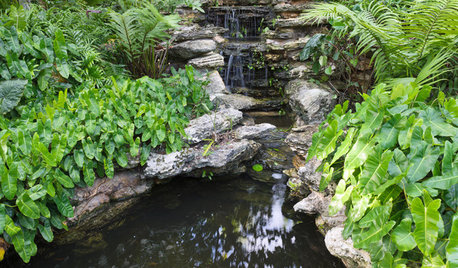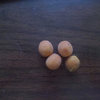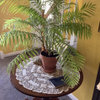Hello Everyone! I conducted an experiment for an ecology class to
determine how a home grower could get high germination success in a
short amount of time for Pindo Palms. The sterilization technique is
optional. If you live in an area where mold is an issue, or if you would
just like to play it safe, follow the sterilization procedure but
PLEASE SEE THE COMMENT BELOW ON THAT SUBJECT.
SUPPLIES:
* Hot water heater (you can get a used scientific water heater for <<$100 if you keep your eye out)
* Perlite
* Vermiculite
* Coconut Fiber (fine)
* 1-gal ziploc bag
*
Pindo Palm (Butia capitata) seeds. Mine were left outside after they
fell from the tree through the winter. If you try this procedure on
seeds collected immediately from the fruit you may not get the same
results.
* Aluminum foil and Pan (optional)
STERILIZING THE SEED MEDIUM:
1.
Mix ~80% coconut fiber, 5% vermiculite (mica), 15% perlite. You don't
have to do this exact medium, but this is what I used for the
experiment.
2. Add water until moist, but not soggy.
3. Preheat oven 190 F (~88 C).
4. Cover with aluminum foil and poke a hole or two in the foil.
5. Bake 40 minutes.
6. When the medium is cool enough to handle, pour into 1-gal ziploc bag until ~1/3 full.
STERILIZING THE SEEDS:
1.
First, remove the endocarp. This is the hard shell outside of the
seeds. Each one will contain 1-3 seeds. Place the seed on a rock so it
sits in a wedge. Tap lightly with a hammer until it cracks. You WILL
lose seeds this way. Just eat the ones that show signs of damage. They
taste mildly like coconut.
2. Place in ~5% NaOCl (bleach) for 3 minutes. How do you know how much bleach to use if your bleach is not 5%? Example Problem:
I
have 8% bleach from the store and want to dilute it to 5%. Let's say I
know I need ~1/2 c. of liquid to get all my seeds wet. The formula is
(Concentration 1) x (Volume 1) = (Concentration 2) x (Volume 2) and you
are trying to determine what your final volume will be if you use 1/2 c.
of bleach.
(5 x 0.5) / 8 = amount of bleach to use = 0.3 c. bleach (which is close enough to 1/3 c.)
So,
your final 5% bleach mix will be [0.5 (1/2) cups] - [1/3 c. bleach
used] = amount of water to add to your 8% bleach = 0.2 cups water
ANSWER: Mix 0.2 c. water with 0.3 c. 8% bleach to get 0.5 c. of 5% bleach
I'm
sure I made that overly complicated, but if you every need to do a
dilution for any other gardening project - I hope this is helpful.
3. Rinse off your sees in water ~30 seconds.
4.
Soak your seeds in household vinegar for 1-2 minutes. Why did I do
this? Because of a paper I read by AREF A. ABDUL-BAKI (1974) that said
if you don't neutralize the bleach it will cause at least some damage. This step may be overly cautious - but that's what I did.
5. Rinse off your seeds in water ~30 seconds.
SOWING SEEDS:
1. Place your seeds 1-2 inches (2.5-5 cm) into your sterilized medium.
2. Place your ziploc bags containing the medium and seeds in a hot water at 40 C (102 F) for at 7 - 10 weeks.
COMMENTS:
* The photos below are the results I got after sitting for 8 weeks.
*
The seeds that were in the group treated with bleach and had the soil
cooked SEEM to be less developed than those that were just placed in
dirt. This may be due to seed damage from the bleach, or I may have
biased my results by unintentionally choosing the best looking seeds for
one treatment or the other (bleach or no bleach).
* I'm sorry the pictures are poor quality
I hope someone finds this helpful!













kinzyjr {Lakeland, FL - USDA: 9b, Record: 20F}
Related Discussions
How to sprout Butia capitata
Q
Phoenix canariensis canary date palm vs Pindo Jelly Butia capitat
Q
3g Butia Capitata putting out inflorescence?
Q
Butia Capitata Palm question
Q